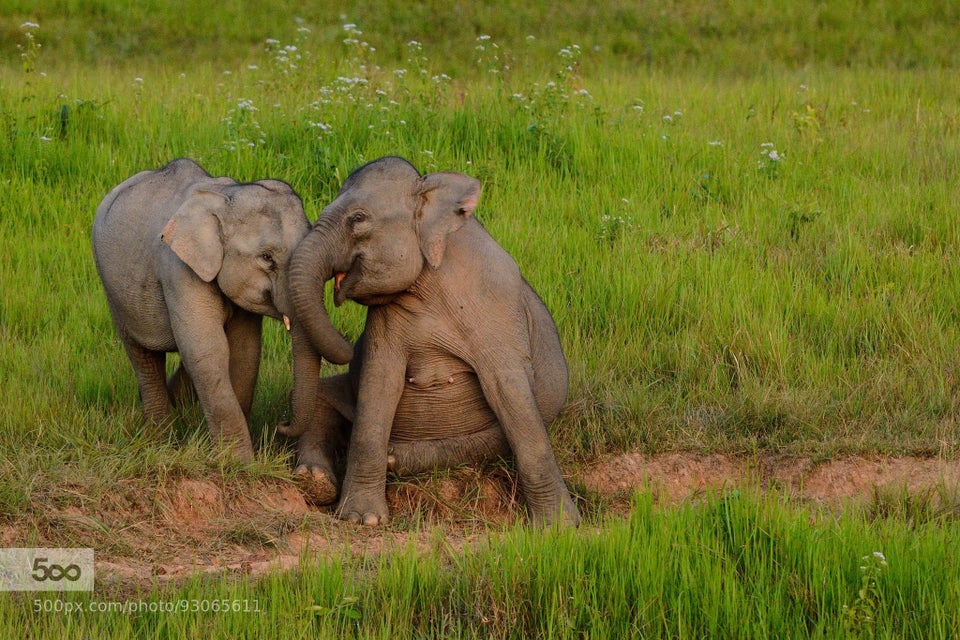Poachers in just a decade slaughtered roughly 25,000 forest elephants in Africa’s Minkébé National Park ― as much as 81 percent of the population in what has been an important sanctuary for the species, according to a new study.
The park’s population of elephants fell by at least 78 percent from 2004 to 2014, according to Duke University researchers, who calculated the loss by comparing elephant dung surveys. The dramatic decline is a “startling warning that no place is safe from poaching,” the study’s authors wrote.
Minkébé, a remote, 2,900-square-mile preserve in the central African country of Gabon, is a front line in the fight against poaching driven by the demand for ivory in Asia.
“With nearly half of Central Africa’s estimated 100,000 forest elephants thought to live in Gabon, the loss of 25,000 elephants from this key sanctuary is a considerable setback for the preservation of the species,” lead author John Poulsen, an assistant professor of tropical ecology at Duke, said in a statement.
African forest elephants are smaller than the more common savannah elephant. Their birthrate is much slower, according to research published last year, so the forest elephant population takes longer to recover from poaching. Research led by the Wildlife Conservation Society found it will take nearly a century for forest elephants in all of Africa to recover from the havoc poachers caused from 2002 to 2013, when their population plummeted 65 percent.
The new study, published Monday in the journal Current Biology, is a sobering reminder of poaching’s devastating impact on some of the world’s biggest and longest-lived creatures.
In Africa, some 100 elephants are killed each day by poachers, often for nothing more than the ivory of their tusks.
In Minkébé, the pressures are coming from multiple directions. Gabonese poachers are slaughtering elephants in the southern part of the park, while poachers from Cameroon have “emptied the northern and central sections of the park,” according to the study.
The Gabonese government has taken steps to curb poaching in the park, including elevating the conservation status of forest elephants and doubling the national park agency’s budget. But the measures appear to have done little to reduce cross-border poaching, Poulsen said.
“The clock is ticking,” Poulsen said. “To save Central Africa’s forest elephants, we need to create new multinational protected areas and coordinate international law enforcement to ensure the prosecution of foreign nationals who commit or encourage wildlife crimes in other countries.”
China ― the world’s largest ivory market ― last year announced plans to shut down its domestic ivory trade by the end of 2017. The move came several months after the U.S., another leading market, banned the sale of virtually all ivory products in an effort to protect African elephants.

